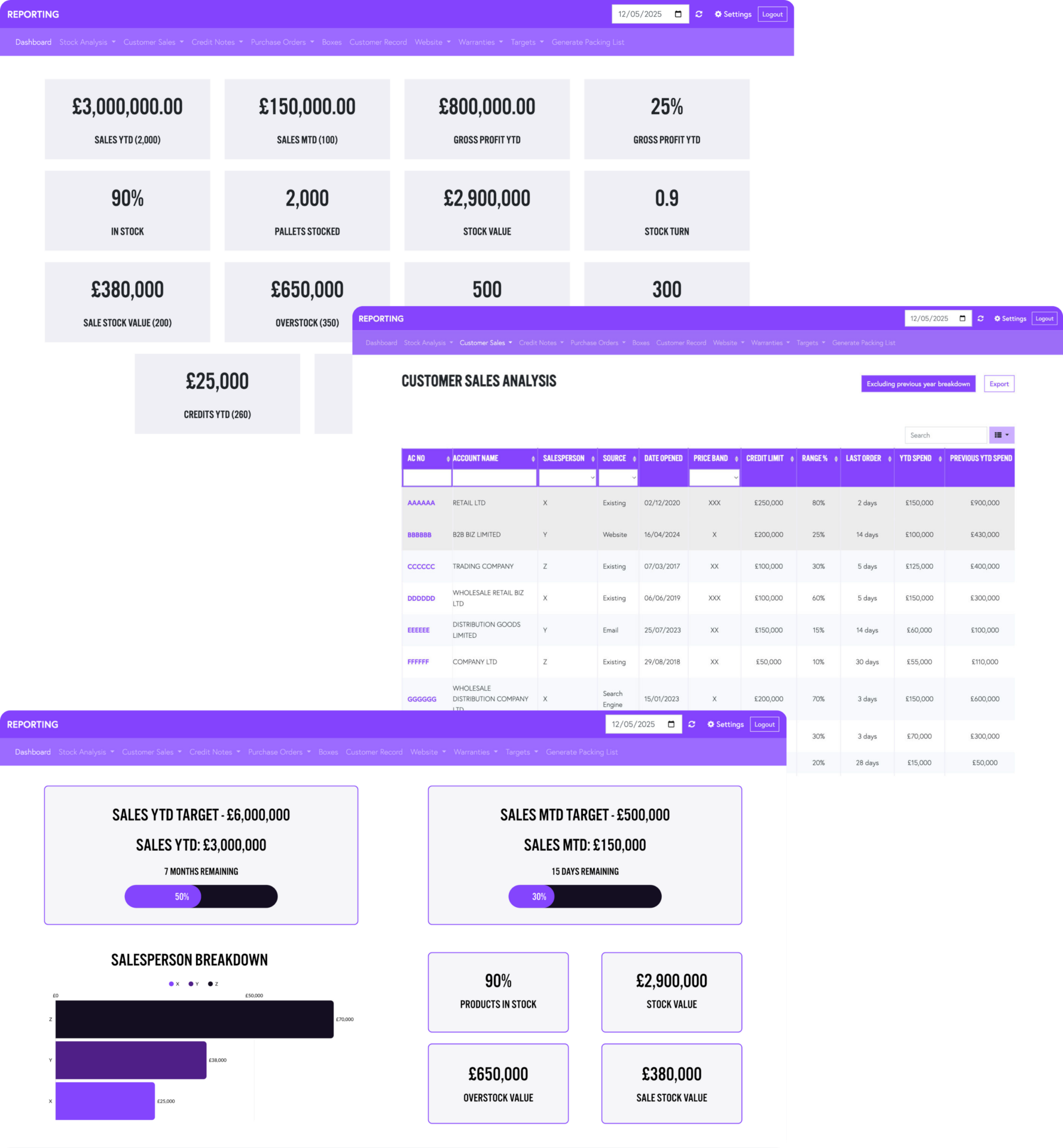By Pip Duma
Tags: Reporting, System Integration
From Guesswork to Clarity: Why Real-Time Reporting Really Matters
Most B2B businesses don’t realise their reports are actually showing them yesterday’s problems.
👎 Sales were down? That happened 24 hours ago.
🚪 Customer churn increased? You’re only just seeing it now.
💔 Your best-performing campaign flatlined? You’re already behind.
In fast-paced, performance-led sectors, a 24-hour delay can be the difference between acting and reacting. That’s why live, always-on data has gone from nice-to-have to non-negotiable.
At Sequel, we’ve seen the shift that happens when businesses move from static reports to real-time insight. Leaders make sharper calls, teams become more agile, and performance is easier to optimise – because decisions are based on what’s happening now, not what already happened.
Real-time reporting: what’s the big deal?
Spot issues the moment they arise.
Whether it's a drop in online orders, a spike in returns, or a campaign losing traction – live data lets you step in before it’s too late.
Dynamic dashboards, built for your business.
From marketing to ops to finance, real-time dashboards make performance crystal clear – no more waiting on a report to tell you what’s already gone wrong.
Cut decision lag. React faster.
When speed matters, real-time reporting helps you move with confidence, not caution. Whether you're mid-campaign or mid-crisis, your team has the insight it needs to act fast.

Real-time reporting for B2B businesses: common FAQs answered
As we've seen, real-time reporting is becoming a key part of modern business intelligence. So to help you get started, we've answered some of the most frequently asked questions we hear from B2B businesses looking to level up their reporting insights.
- What’s the difference between real-time reporting and traditional BI tools?
Traditional BI or reporting tools often rely on scheduled data pulls—sometimes every few hours, sometimes just daily or weekly. That means the numbers you're seeing are a reflection of the past. Real-time reporting connects directly to live data sources and updates automatically, so you're working with information that's accurate to the moment. - Does real-time reporting require expensive software?
Not necessarily. Many modern reporting tools offer real-time capabilities without the need for costly enterprise licences. The key is selecting platforms that integrate well with your existing tech stack and support automated data refreshes. Open-source tools like Metabase and Redash, or cloud-based platforms like Microsoft Power BI and Google Looker Studio, or even custom dashboards using APIs can all offer real-time visibility without breaking the budget. - Which types of data are best suited to real-time tracking?
Real-time reporting works best for areas where rapid changes impact performance or decision-making. This includes areas such as website or app traffic and conversions, sales or order volumes, stock levels and logistics, customer service queries and marketing campaign engagement. - Is real-time data always better than scheduled reports?
Not always. Real-time reporting is ideal for operational awareness and fast responses, but for long-term strategic decisions, historical and comparative reporting is still essential. The best reporting setups combine both: real-time dashboards for immediate insight, and gradual, more structured reports for broader business planning and reflection. - What are some of the challenges when implementing real-time reporting?
The biggest challenges usually involve data consistency and integration. If your systems aren’t well connected, or if your data quality is poor, real-time reporting can actually create more confusion than clarity. That's why it is also important to design dashboards that are genuinely useful—not just filled with every data point available. Good real-time reporting focuses on the signals, not noise.
Static Reports vs Real-Time Reports – Which One Costs You More?
Still unsure about the competitive advantages real-time reporting can have in comparison to your standard static reporting? Let's simplify it further and break it down.
| Static Reports ❌ | Real-Time Reports ✅ | |
| Data freshness | Hours to days out of date | Updated instantly |
| Decision-making speed | Slower, based on old insights | Fast, responsive, in the moment |
| Accuracy of action | Often reactive and misaligned | Proactive and data-driven |
| Impact on performance | Lag can lead to missed opportunities | Teams can optimise in real-time |
| Long-term cost | Hidden – poor decisions, lost revenue | Visible – but ROI is higher |
Want to explore how Sequel can help you?
Real-time reporting isn’t about chasing data – it’s about creating momentum. It gives your team clarity, confidence, and control – and that adds up to better results. See More. Sell Smarter. Save Hours Every Week. No more manual spreadsheets. No more delays.
Don't forget to connect with us on socials

